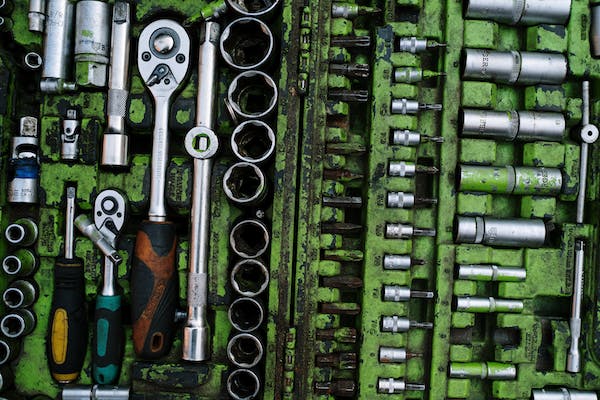Machine screws are an essential component in many industrial applications, providing a reliable and secure way to join materials together. But with so many different types and sizes available, it can be difficult to know where to start when selecting the right screws for your needs. In this article, we’ll take a closer look at machine screws, including their definition, materials, types, and uses. We’ll also cover some tips for choosing the right screws and common mistakes to avoid.
What are Machine Screws?
A machine screw is a type of fastener that is used to join two or more parts together. Unlike bolts, which are typically used to assemble large components, machine screws are designed for smaller applications and are often used in precision engineering. They are usually made of metal, such as stainless steel, brass, or aluminum, and come in a variety of shapes and sizes.
Materials Used for Machine Screws
Machine screws can be made from a range of materials, each with its own unique properties and benefits. Some of the most common materials used include:
- Stainless Steel: This is a popular choice for machine screws because it offers excellent corrosion resistance and durability. Stainless steel screws are commonly used in food processing equipment, medical devices, and marine hardware.
- Brass: Brass screws are made from a copper and zinc alloy and offer good corrosion resistance and low friction. They are often used in plumbing fixtures, electrical connectors, and decorative hardware.
- Aluminum: Aluminum screws are lightweight and corrosion resistant, making them ideal for use in aircraft, automotive, and other transportation applications.
Types of Machine Screws
There are several different types of machine screws, each with its own unique characteristics and uses. Some of the most common types include:
- Pan Head: These screws have a flat, rounded head and are commonly used in countersunk holes.
- Phillips Head: These screws have a cross-shaped slot in the head and are easy to tighten and loosen with a phillips screwdriver.
- Flat Head: These screws have a flat head and are often used in applications where a flush finish is desired.
- Socket Head: These screws have a hexagonal socket in the head and are commonly used in applications where high torque is needed.
- Cap Screw: These screws have a round head and are used to secure caps or covers onto machinery.
Uses of Machine Screws
Machine screws are used in a wide range of industries and applications, including:
- Automotive: Machine screws are used extensively in car manufacturing, particularly in engine blocks, cylinder heads, and gearboxes.
- Aerospace: Machine screws are used in aircraft production, both in structural components and in engines.
- Medical Devices: Machine screws are used in various medical devices, such as surgical instruments, implants, and diagnostic equipment.
- Furniture: Machine screws are used in furniture construction, particularly in pieces that require a strong and secure joint.
- Electronics: Machine screws are used in electronic devices, such as computers, smartphones, and televisions.
Tips for Choosing the Right Machine Screws
When selecting machine screws, it’s important to consider several factors to ensure you get the right ones for your needs. Here are some tips to keep in mind:
- Size Matters: Make sure you select the correct size of screw for your application. Measure the hole or opening where the screw will go and compare it to the dimensions of the screw.
- Material Matters: Consider the material of the screw and whether it will be compatible with the materials it will be joining.
- Torque Matters: Think about the amount of torque that will be applied to the screw. If high torque is needed, a socket head screw may be a better choice than a pan head screw.
- Finish Matters: Consider the finish of the screw and how it will fit into the overall design of the product.
Common Mistakes to Avoid
When working with machine screws, there are several common mistakes to avoid. Here are a few to keep in mind:
- Over-tightening: Don’t over-tighten machine screws, as this can strip the thread or damage the surrounding material.
- Using the wrong driver: Make sure you’re using the right driver for the type of screw head you’re working with. For example, don’t try to drive a phillips head screw with a flathead screwdriver.
- Not lubricating the threads: Applying a small amount of lubricant, such as WD-40 or silicone spray, to the threads of the screw can help prevent seizing and make future disassembly easier.
- Over-torquing: Be careful not to apply too much torque when tightening machine screws, as this can cause the screw to strip or break. Use a torque wrench if possible to ensure the proper amount of torque is applied.
- Not checking for damaged threads: Before installing a machine screw, always check the threads for any signs of damage or debris. If the threads are damaged, clean them out with a wire brush or replace the screw altogether.
- Installing the wrong length screw: Make sure you’re installing the correct length screw for your application. Measure the distance between the mounting points and choose a screw that’s long enough to span the gap but not so long that it protrudes excessively on the other side.
- Failure to pre-drill: When installing machine screws in a new installation, it’s important to pre-drill the hole to the appropriate depth to avoid splitting the material being drilled.
- Not using lock washers or nuts: Lock washers and nuts can help prevent machine screws from coming loose over time due to vibration or other forces. Always use them when necessary to ensure a secure connection.
- Not using the right coatings: Different coatings can provide additional protection against corrosion, wear, and galling. Choose the right coating based on the environment and conditions in which the screws will operate.
- Not considering the temperature range: Some machine screws are designed to operate within specific temperature ranges. Ensure that the screws you choose can handle the temperatures they’ll be exposed to during operation.
- By following these guidelines and avoiding common mistakes, you can ensure that your machine screws are installed correctly and safely, resulting in improved performance and longevity of your equipment.





Leave a Reply